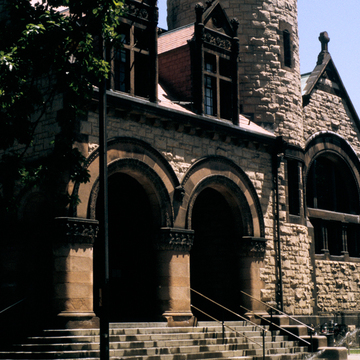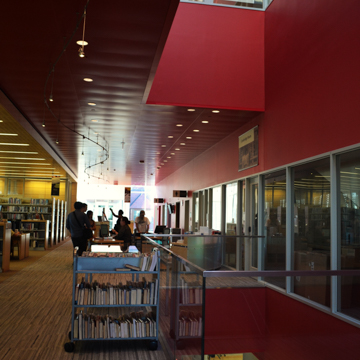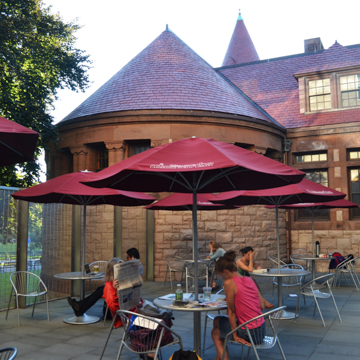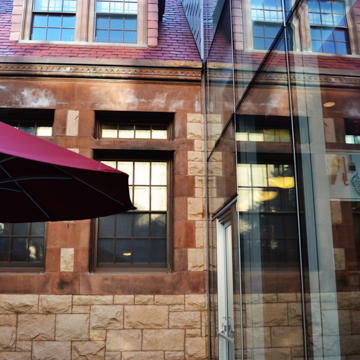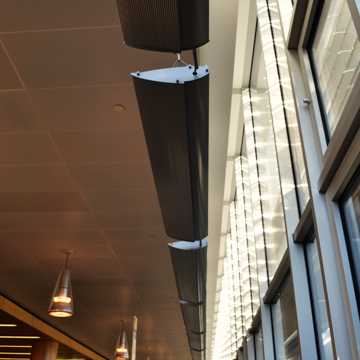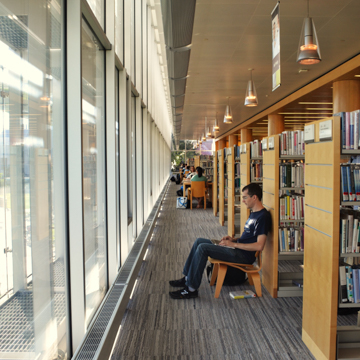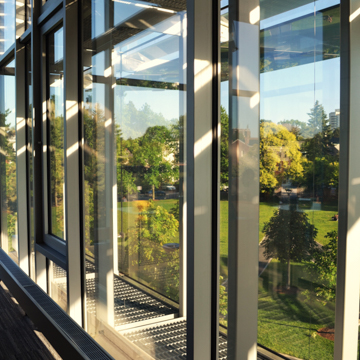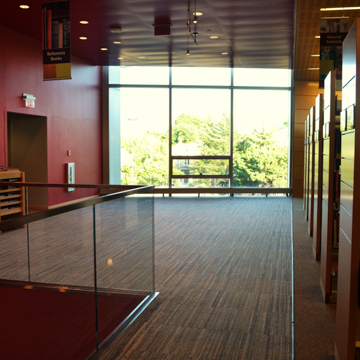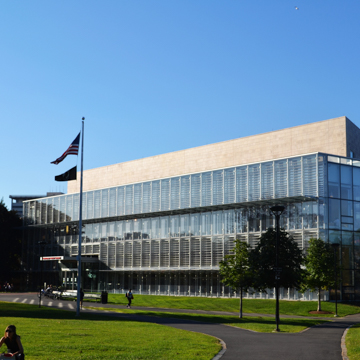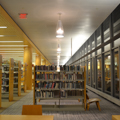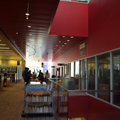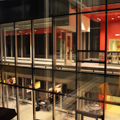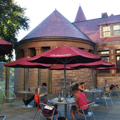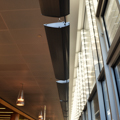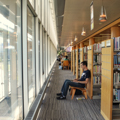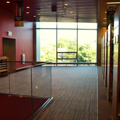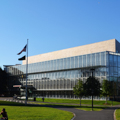Van Brunt and Howe won the competition for the Cambridge Public Library one year after obtaining the commission for the library in Dedham (DH6). As in Dedham, the Cambridge Public Library clearly reveals the influence of H. H. Richardson, especially the combination of light quarry-faced granite for the walls and dark sandstone for the trim and such details as French Renaissance–style dormers. Each element of the building is clearly expressed—double arcaded entrance, circular stair tower with conical roof, large arched reading rooms, and clerestory-lighted book stacks. Henry Van Brunt's expertise in the functional aspects of library design, however, surpassed Richardson's, as shown by his 1877 system of iron book stacks for Harvard's Gore Hall library and his 1885 work on the library for the University of Michigan. He made firewalls and iron stacks an original feature of the Cambridge library, helping to win the commission over both McKim, Mead and White and Peabody and Stearns.
In 1894 Van Brunt and Howe designed a two-story addition for a children's room and meeting spaces; a 1901 addition doubled the space allocated for book stacks. Shepley, Bulfinch, Richardson and Abbott departed from the Romanesque for their 1967 addition, which retains sympathetic scale and materials. The City of Cambridge selected William Rawn and Ann Beha in 2002 to design a major addition to the east of the building.















